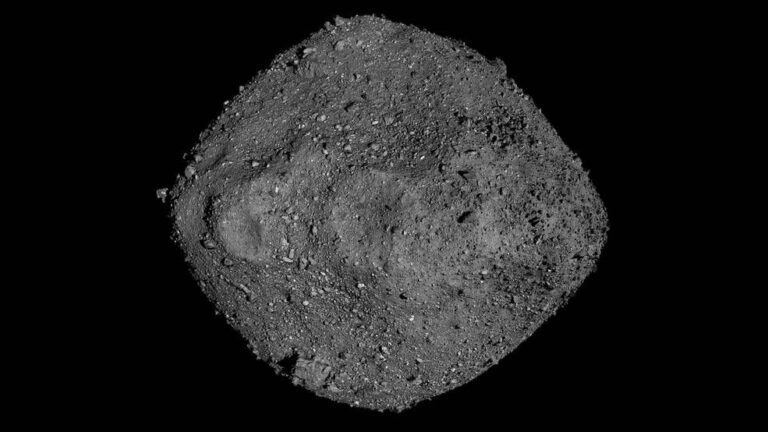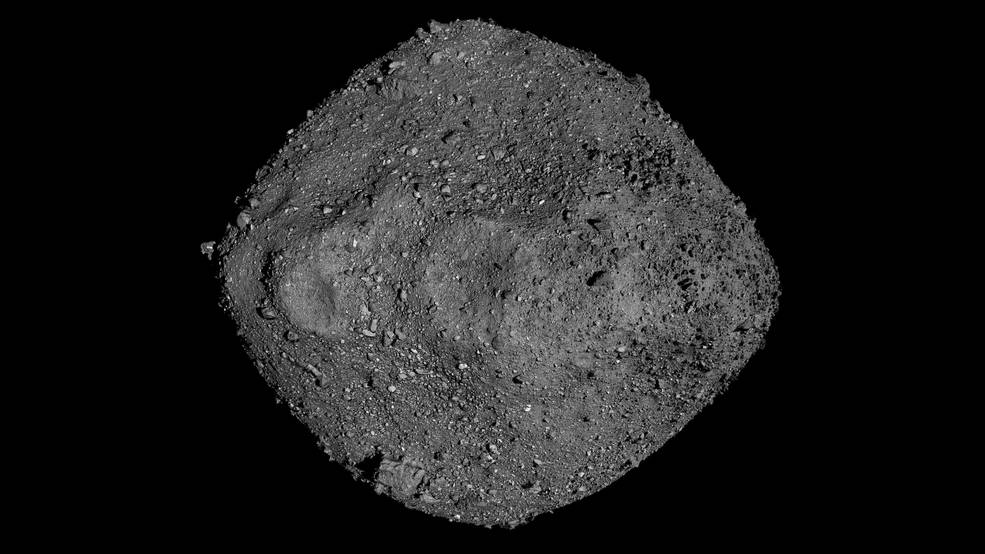
[ad_1]

The asteroid Bennu is a scientific gem, but a potentially dangerous one: No other space rock has a higher known probability of hitting Earth in the next 200 years. NASA’s OSIRIS-REx asteroid-sampling mission will help scientists better understand how to protect humankind if Bennu’s trajectory were ever to intersect with that of our planet.
Bennu, discovered in 1999, is a rare B-type asteroid that is rich in carbon material believed to contain chemical compounds from the early epochs of the solar system. On top of that, its orbit makes the 1,614-foot-wide (492 meters) Bennu the most dangerous known asteroid in the solar system.
Bennu is large enough to cause significant destruction on Earth. If it hit us, the space rock would punch a crater several miles wide into the planet’s surface. The impact would also spawn an earthquake and a shockwave through Earth’s atmosphere, which together would likely damage buildings hundreds of miles away from the impact site.
Live updates: OSIRIS-REx asteroid sample return landing
Related: How NASA’s OSIRIS-REx will bring asteroid samples to Earth in 5 not-so-easy steps
The good news is that the chances of the rock actually hitting our planet anytime soon are very slim. Models of Bennu’s and Earth‘s orbital trajectories show that the paths of the two bodies might intersect in the year 2182, though they probably won’t: The impact probability in that year is just 1 in 2,700. And even if those low odds hit — or revised models peg the risk as increasing — engineers and scientists still have plenty of time to figure out how to deal with Bennu. Data collected by OSIRIS-REx will play a key role in shaping a potential Bennu deflection mission if it were ever needed.
When OSIRIS-REx touched down on Bennu to snatch its sample in October 2020, the rock’s surface responded in an unexpected way. Retreating almost like water, the mass of gravel inside the crater in which OSIRIS-REx landed, called Nightingale, nearly swallowed the spacecraft. That showed scientists that the surface layer of the asteroid has a surprisingly low density. The spacecraft sank 20 inches (50 centimeters) deep into Bennu’s surface before its backaway thrusters fired. The escape maneuver triggered another unexpected response: images from OSIRIS-REx’s onboard cameras revealed that a massive cloud of gravel and sand rose into space, threatening the retreating spacecraft.
Scientists are now comparing measurements from Bennu with data collected during NASA’s asteroid deflection experiment, DART, which successfully altered the orbit of the asteroid moon Dimorphos around its parent space rock Didymos in September 2022.
“When I saw the images of Dimorphos, it looked really familiar; it looked like a bouldery pile of rubble with that same kind of characteristic texture,” Dante Lauretta, the OSIRIS-REx principal investigator at the University of Arizona, told Space.com in an earlier interview. “The [DART] mission was phenomenally successful. It imparted a lot of momentum to the asteroid, substantially slowed its orbital velocity, and a large part of that is because there was so much material that was ejected from the surface, and that transfer of energy resulted in a significant change of the orbital period.”
OSIRIS-REx’s in-depth investigation of Bennu from orbit also revealed that the rocks towering on the asteroid’s surface are made of a very porous, sponge-like material. This porosity, scientists think, may be protecting Bennu from disruption by impacts of other, smaller, bodies.
“It’s like a crumple zone in a car,” Edward Beau Bierhaus, an OSIRIS-REx research scientist at Lockheed Martin, which built the OSIRIS-REx spacecraft for NASA, told Space.com. “The energy of that impact, rather than being distributed broadly into the surface and into the subsurface, can be absorbed by that single porous boulder.”
As a result, there are fewer craters on Bennu’s surface than scientists expected based on their knowledge of how common asteroid collisions have been throughout the history of the solar system.
These strange qualities of the material that makes up Bennu could also affect how the rock would respond to a potential attempt to nudge it away from a collision course with Earth.
OSIRIS-REx studied Bennu up close for two years, and scientists are still studying the information it gathered there — and they’ll be poring over the mission’s asteroid sample, which is set to land on Earth this Sunday (Sept. 24), for decades to come.
“I think that people of the future will be well-equipped to deal with Bennu, especially because of the enormous amount of information that we have collected [at Bennu],” Lauretta said. “I like to think of it as one of our gifts to the future generations.”
[ad_2]